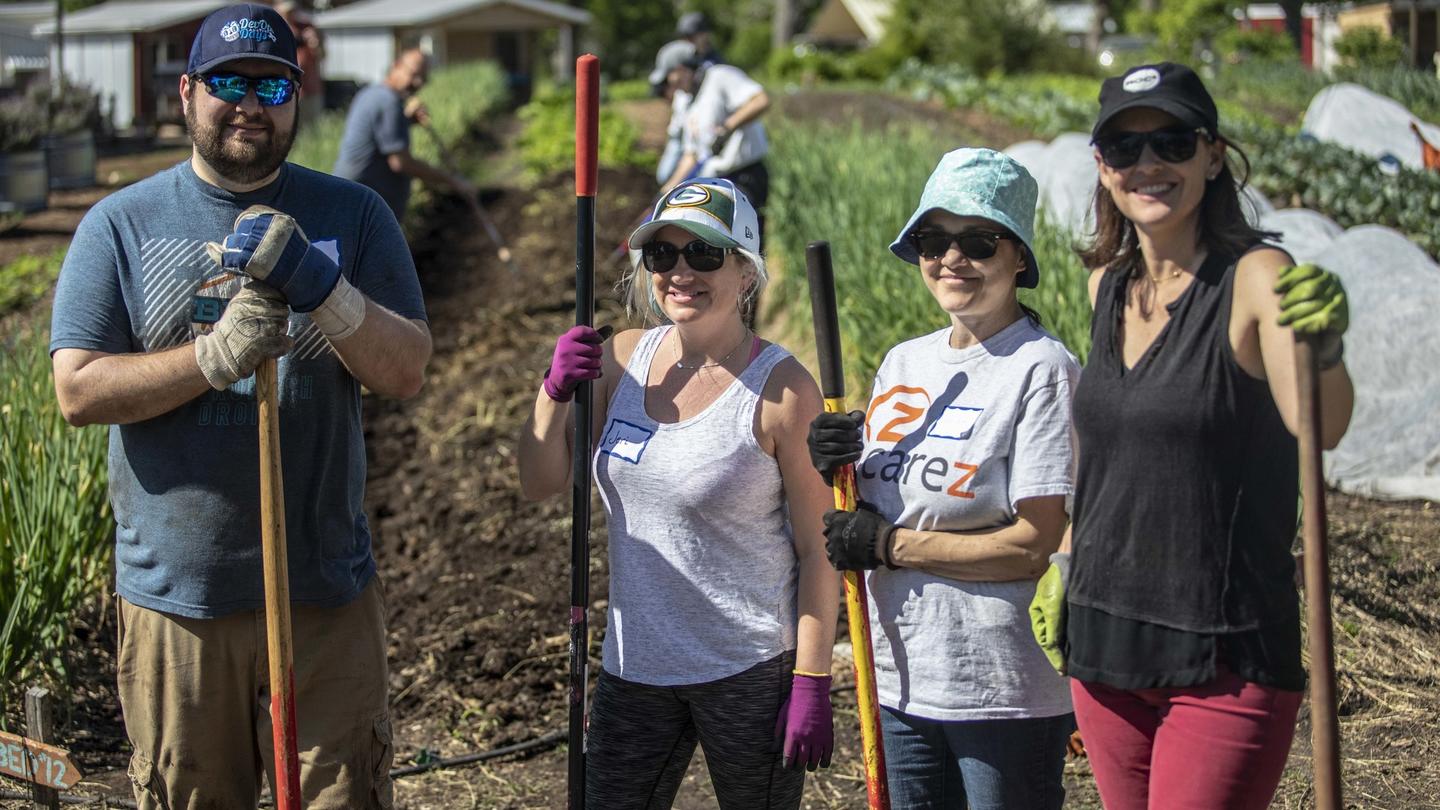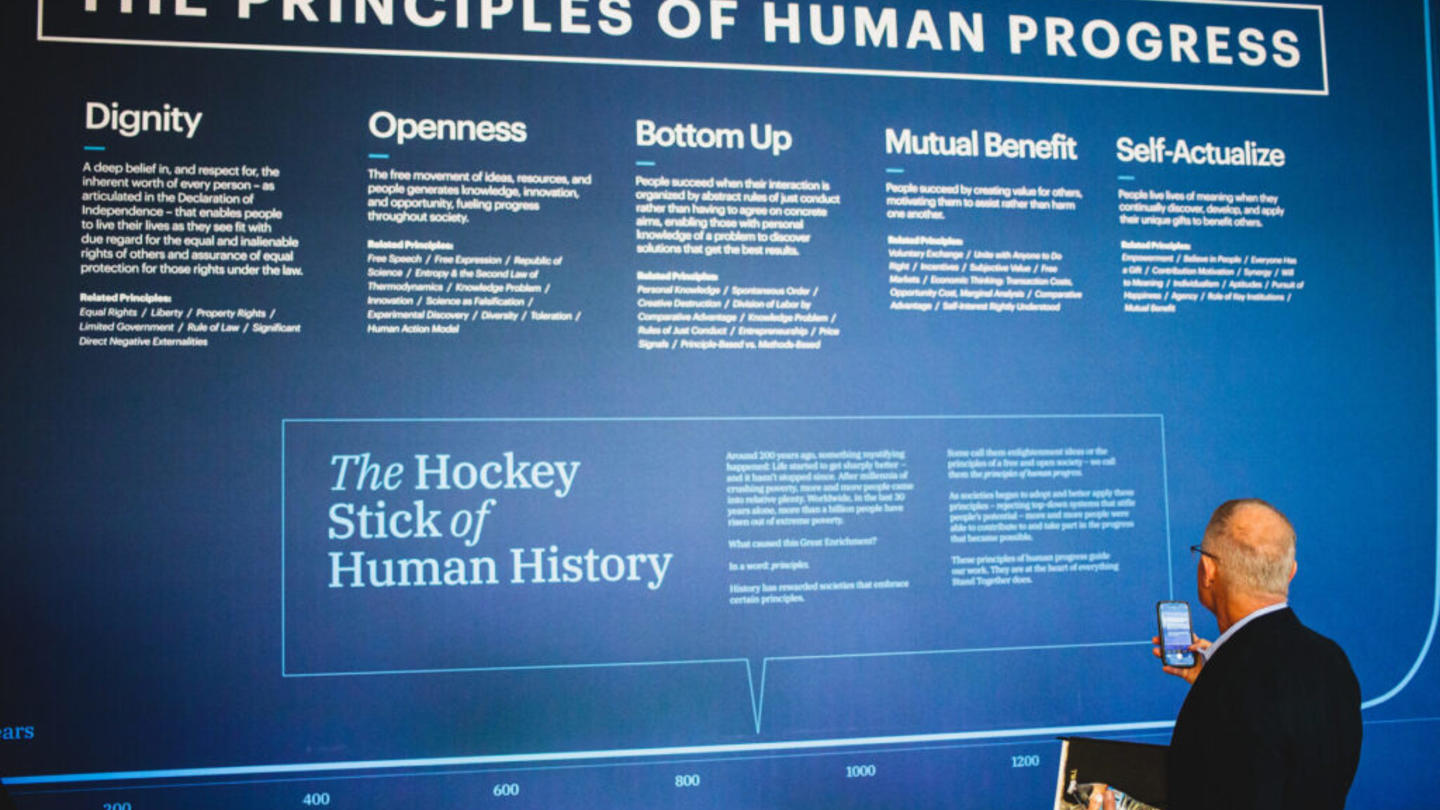Over the past 22 years, Mobile Loaves & Fishes has mobilized thousands of volunteers to serve homeless individuals in Austin, Texas. What began as a food truck ministry has now turned into a 51-acre micro-home and micro-enterprise community, with thousands of volunteers donating their time and talent to live and serve alongside the homeless.
"Volunteerism has been at the core of everything that we have done. We believe that the single greatest cause of homelessness is the catastrophic loss of family. The family is the original cell of social life and so it's important to us that families are able to participate in the work that we're doing."
Taylor Graham, director of stewardship at Mobile Loaves & Fishes
While every organization wants to provide meaningful opportunities for individuals to engage in their mission, it's not always the easiest thing to accomplish. Mobile Loaves & Fishes (MLF) has succeeded in cultivating a lifestyle of solidarity and partnership with over 15,000 individuals, all with very different backgrounds, experiences, and resources. Taylor Graham, the organization's director of stewardship, shares some insights with our team, which has helped Mobile Loaves & Fishes leverage the motivation and talents of their community to be a powerful engine in helping them accomplish their mission.
Tip #1: Lead with flexibility
"To broaden the funnel of people that can get engaged and connected to your organization, you have to broaden the types of opportunities that they have to engage," says Taylor. "Organizations have the responsibility of stewarding volunteers so that their passions, interests, skillsets and desires are being utilized and met within the opportunities available."
In the early years, MLF had success with "guilt-free opportunities" that were low-pressure and wouldn't derail the program if a volunteer didn't show up. "That was a really great thing for us and for our volunteers," Taylor says. "It allowed them to be present when they could be present and if something came up and they weren't able to be there, that was OK."
MLF now offers volunteer roles with varying levels of commitment and tailors them to the unique skills and comfort levels of volunteers. This creates purposeful experiences and makes volunteering more personally fulfilling. Taylor advises to ask boldly for what you need and to avoid making presumptions about what volunteers will and won't want to do. Beware of creating a culture that assumes no one wants to do the dirty jobs or menial tasks — you'll be pleasantly surprised by the interests and what excites people.
"There is somebody out there who wants an administrative data entry role. There's someone out there who actually would enjoy deep cleaning bathrooms or organizing your supply closet," she says. "So if you ask boldly, your chances of getting them are a million times higher than if you simply never ask for it in the first place."
Being flexible and willing to collaborate instead of controlling volunteer experiences has helped MLF form strong relationships with large companies such as Keller Williams, a real estate company that brings hundreds of volunteers out for the firm's international day of service each year. The Keller Williams group has grown so much that they've had to be creative with how they mobilize the volunteers. For example, they've used MLF's indoor space to make blankets for hospitalized children before going out to deliver them.
"We love the idea that 300-plus people can come out here and do some work that benefits us here at the village and also do some work that is benefiting other nonprofits in the city," Taylor says.
The MLF housing development welcomes over 15,000 volunteers every year, the vast majority of whom are groups that participate once a year. Taylor stresses that this is intentional and part of their volunteering "secret sauce" — "the need for diversity and creating opportunities that meet all people's needs."
Tip #2: Relational, not transactional
"When volunteerism becomes transactional, then it's just numbers coming and going and it's not real relationships and real depth being built," says Taylor. "Keeping things relational as much as possible is the key."
This requires an intentional consideration of how each person can be a relational asset to their community. For example, about 90 percent of MLF volunteers serve alongside neighbors who have experienced homelessness themselves, adding opportunity for deep learning and perspective shifting. If volunteers never meet the people who are benefiting from their work, any stereotypes they carry will remain unchallenged.
"One of our goals as an organization is to break down stereotypes and to transform how people see the homeless," says Taylor. "In working alongside and learning how to harvest carrots from the ground or how to properly landscape a certain area from one of our formerly homeless neighbors, those stereotypes are being transformed."
Developing opportunities for volunteers to be in relationship with those they are serving creates authentic, human-to-human connections. Taylor emphasizes that this draws volunteers into the mission and vision of the organization, which in turn leads to broader community support and more recurring volunteers.
"Even if our model is not exactly replicable for your program and for the people that you serve," Taylor asks, "how can you make opportunities more relational? How can you connect your volunteers deeper into the mission of the organization that you serve?"
Tip #3: "Yes, and"
It's important to establish a set of guiding principles that shape the culture of volunteerism within your organization long-term. A strong culture will strengthen your community as well as your brand. The first step is to know your vision and communicate it clearly to everyone in the organization. Volunteers should connect with your vision as much as the staff and the individuals you serve.
"Staff should be trained to be welcoming and provide hospitality to volunteers so that they feel connected to the vision and connected to why the work they're doing is moving the needle," says Taylor.
Understanding the "why" behind what the organization is doing will empower the volunteers to engage and inspire them to continue serving.
"The more that they are going to be connected to our mission, the more that they're going to want to come back out for an event, or bring friends out to volunteer again, or become a donor or any of those kinds of things," says Taylor.
She also points to MLF's emphasis on their "yes, and" philosophy. It's a posture of always being willing to say yes and ask what more you can do. "You never say 'no' because that will kill the [momentum], and if you say 'yes, but' that will also kill the momentum. So our posture is one of 'yes, and'," she says.
This principle echoes through every part of MLF and may be a clue into why the organization has been so successful with volunteers. From prioritizing volunteer skills and interests, to creating relational experiences and a strong culture, Mobile Loaves & Fishes is constantly asking what more it can do together with the community to accomplish its mission.
"What we do is not about simply feeding people, housing people, creating jobs for people, getting medical services for people," says Taylor. "Those are all things that we do, but all of it is rooted in our desire to empower communities into a lifestyle of service with the homeless."
The Stand Together community helps America's boldest changemakers tackle the root causes of our country's biggest problems. Explore ways you can partner with us.




